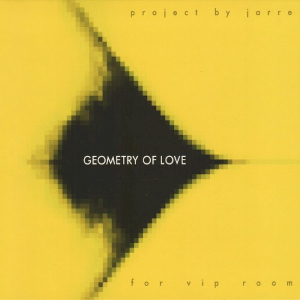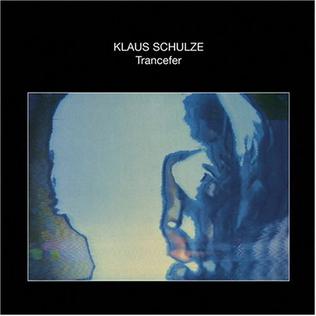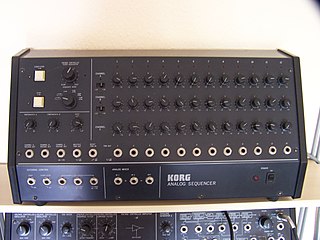
Oxygène is the third studio album by French electronic musician and composer Jean-Michel Jarre. It was first released in France in December 1976 by Disques Motors, and distributed internationally in 1977 by Polydor Records. Jarre recorded the album in a makeshift studio that he set up in his apartment in Paris, using a variety of analog and digital synthesizers, and other electronic instruments and effects.

Klaus Schulze was a German electronic music pioneer, composer and musician. He also used the alias Richard Wahnfried and was a member of the Krautrock bands Tangerine Dream, Ash Ra Tempel, and the Cosmic Jokers before launching a solo career consisting of more than 60 albums released across six decades.

ARP Instruments, Inc. was a Lexington, Massachusetts manufacturer of electronic musical instruments, founded by Alan Robert Pearlman in 1969. It created a popular and commercially successful range of synthesizers throughout the 1970s before declaring bankruptcy in 1981. The company earned a reputation for producing excellent sounding, innovative instruments and was granted several patents for the technology it developed.

The VCS 3 is a portable analogue synthesizer with a flexible modular voice architecture introduced by Electronic Music Studios (EMS) in 1969.

The EMS Synthi A and the EMS Synthi AKS are portable modular analog synthesisers made by EMS of England. The Synthi A model debuted in May 1971, and then Synthi AKS model appeared in March 1972 a with a built-in keyboard and sequencer. The EMS Synthi models are notable for its patch pin matrix, its functions and internal design are similar to the VCS 3 synthesiser, also made by EMS. EMS is still run by Robin Wood in Cornwall, and in addition to continuing to build and sell new units, the company repairs and refurbishes EMS equipment.

Geometry of Love is the fifteenth studio album by French electronic musician and composer Jean-Michel Jarre, released by Warner Music in October 2003.

Rubycon is the sixth studio album by German electronic music group Tangerine Dream. It was released in 1975 on the Virgin label. It is widely regarded as one of their best albums. Rubycon further develops the Berlin School sequencer-based sound they ushered in with the title track from Phaedra.

"Welcome to the Machine" is the second song on Pink Floyd's 1975 album Wish You Were Here. It features heavily processed vocals, layers of synthesizers, acoustic guitars as well as a wide range of tape effects. The song was written by bassist Roger Waters.

Tonto's Expanding Head Band was a British-American electronic music duo consisting of Malcolm Cecil and Robert Margouleff. Despite releasing only two albums in the early 1970s, the duo were influential in the development of electronic music and helped bring the synthesizer to the mainstream through session and production work for other musicians and extensive commercial advertising work.

Timewind is the fifth album by Klaus Schulze. It was originally released in 1975, and in 2006 was the twenty-second Schulze album reissued by Revisited Records. It is Schulze's first solo album to use a sequencer.

Moondawn is the sixth album by Klaus Schulze. It was originally released in 1976, and in 2005 was the thirteenth Schulze album reissued by Revisited Records. Moondawn is Schulze's first album that was performed in a full Berlin School style, as well as his first to feature contributions from drummer Harald Grosskopf.

Trancefer is the fourteenth album by Klaus Schulze. It was originally released in 1981, and in 2006 was the twenty-third Schulze album reissued by Revisited Records. With the original total running time of 37 minutes and 23 seconds, it was the shortest album in Schulze's canon until the 2006 reissue doubled its running time by including alternate versions of the main tracks.

Irrlicht, is the debut solo album by Klaus Schulze, originally released in August 1972 on Ohr Records. Recorded without synthesizers, Irrlicht's set of "early organ drone experiments" is "not exactly the music for which KS got famous". In 2006 it was the sixteenth Schulze album reissued by Revisited Records as part of a series of Schulze album reissues.

Cyborg is the second album by Klaus Schulze. It was originally released in 1973, and in 2006 was the nineteenth Schulze album reissued by Revisited Records.

Blackdance is the third album by Klaus Schulze. It was originally released in 1974, and in 2007 was the twenty-fifth Schulze album reissued by Revisited Records. For the first time Schulze uses "real" synthesizers and a singer. "Voices of Syn" features Ernst Walter Siemon on vocals. Due to packaging and print errors on later releases, Blackdance was considered Schulze's fourth album for decades, until Klaus D. Müller, Schulze's biographer and publicity manager, discovered from searching through his personal diaries that Picture Music, thought to be the third album, was recorded after Blackdance. Despite this, the reissue labels Blackdance as Schulze's fourth album.

Dreams is the nineteenth album by Klaus Schulze. It was released in 1986, and in 2005 was the third Schulze album reissued by Revisited Records. The reissue bonus track was released early 2004 in Hambühren as a limited promo CD Ion.

Beyond Recall is the twenty-third album by German electronic music pioneer Klaus Schulze, released in June 1991 by Virgin Records' subsidiary label Venture Records. This is the second of seven early-1990s Klaus Schulze albums not to be reissued by Revisited Records.

Das Wagner Desaster Live is the thirtieth album by Klaus Schulze. It was originally released in 1994, and in 2005 was the fifteenth Schulze album reissued by Revisited Records. The reissue of Das Wagner Desaster Live is one of two examples of a Klaus Schulze reissue that changes the original order of the tracks. Das Wagner Desaster Live was released after Schulze's Silver Edition 10-disc CD box set, technically making this album his fortieth.

An analog sequencer is a music sequencer constructed from analog (analogue) electronics, invented in the first half of the 20th century.
Urs Amann was a Swiss surrealist painter. He is mostly known as the painter of the cover art for several Klaus Schulze records, all in a style reminiscent of Salvador Dalí. He also illustrated the covers of many books, including some by his brother, Jürg Amann. Urs Amann liked to qualify his work as "meta-realistic painting".



















